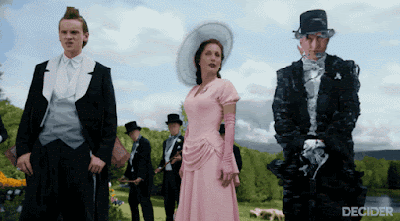John Wick: Chapter 2 review: Well that happened... again!
Nothing in recent cinema can top 2014’s John Wick for pure, furious, elemental action. The first half hour of Chad Stahelski’s directorial debut is like a spooky bedtime story whispered by a hardened mobster: A punk criminal (Alfie Allen) breaks into a man’s home, steals his car, and kills his dog, an unprompted act of aggression, simply because the man disrespected him. Only this man is John Wick (Keanu Reeves), and, viewers quickly learn (as Wick busts open the concrete floor of his basement and pulls a chest of weapons out of it), you don’t make John Wick angry.
The first Wick saw its antihero come out of retirement fueled by familial rage. His wife, who lured him out of his life as an assassin (which cost a huge price), had just died, and in losing their dog, he lost his last remaining tangible connection to her. John Wick: Chapter 2, the much awaited sequel, knew it couldn't match the emotional heft of the original, so it wisely makes no effort to at all. Instead, Stahelski and his screenwriter Derek Kolstad doubled down on the other things that made John Wick amazing, its innovative, balletic approach to ultra-violence and the film’s peculiar, inventive worldbuilding. It is just purely a fantastic decision that pays off.
There’s a strange comfort in just how brilliant John Wick: Chapter 2 is. It’s a testament to the surprising success of the original, an instant cult classic that took the tropes of the revenge thriller and spun them into other-worldly directions. Wick, as played by Reeves, presented as a polite, if unnervingly calm businessman, and the film delighted in watching everyone around him react to his presence. In the first movie, after learning his son had killed Wick’s dog, the head of the Russian mafia reacts with just one word: “Oh.” Then, he tells his son who he’s awoken—“Baba Yaga,” or, as he puts it, the man you hire to kill the "fu**ing" Boogeyman.
Chapter 2 begins with Wick dispatching the final elements of the Russian mob he went to war with in the first film, then returning to his life of solitude. But quickly enough, he’s dragged out of retirement yet again, this time by his fellow assassin Santino D’Antonio (Italian star Riccardo Scamarcio), to whom Wick owes an important debt. Santino can’t hope to appeal to Wick’s grief, this time, the departed Mrs. Wick is mentioned only in passing, but he can invoke the arcane rules and rituals of the league of assassins they both belong to, drawing Wick into a world the first film only touched base on.
Rather than try for the gritty societal realism of many a revenge film, the Wick films exist in some wacky parallel reality where it seems like everyone, from your sainted grandmother to the guy you buy your coffee from in the morning, is a deadly assassin waiting for that contract. Wick and his pals all room at the luxurious Continental Hotel, a five-star paradise run by the unctuous Winston (Ian McShane) where killers can sleep for the cost of one special gold coin. Yes, in these films, assassins even have their own currency (and a cool one at that), and the Continental functions as a safe zone where they aren’t allowed to hurt each other, like they’re playing some bloody, globe-trotting game of tag.
So Wick re-enters this grand game, first to complete the task Santino demands of him, and then to do battle with the various gangster factions he awakens as a result. Among his enemies this time are Common, who plays an elite bodyguard whose skills equal Wick’s; Ruby Rose, as a mute security enforcer; and Reeves’s Matrix co-star Laurence Fishburne, as the head of some New York branch of killers dressed as hobos. This might all sound like lunacy on the page, but Reeves’s utter commitment to the role helps sell it, as does Stahelski’s skill for communicating so much of his world through simple, stark visuals.
But of course, you’re mainly coming to John Wick: Chapter 2 for the action. Stahelski is a former stuntman who doubled for Reeves on many of his films before moving to directing for John Wick. It’s that background that gives these films their distinctive look; the movies want the audience to see the entire stunt, to revel in the back-breaking labor of Hollywood action films, to enjoy their unreality. Wick fights like a gun-toting sorcerer, shooting any goon that comes close to him with uncanny accuracy. The world is so heightened, yet so strictly adherent to its own magical rules, that it remains compelling as it continues to expand around our hero.
Unlike the original, Chapter 2 sets a clear path for another sequel, acknowledging that it’s quickly grown from surprise cult hit to weirdo Hollywood franchise. Happily, there’s a clear path for a trilogy here, rather than just an endless barrage of movies in which Reeves creatively shoots people in the face. By doubling down on its idiosyncrasies, Chapter 2 justifies the existence of more Wick without overstaying its welcome. It’s a lesson most Hollywood sequels could stand to learn.




Comments
Post a Comment